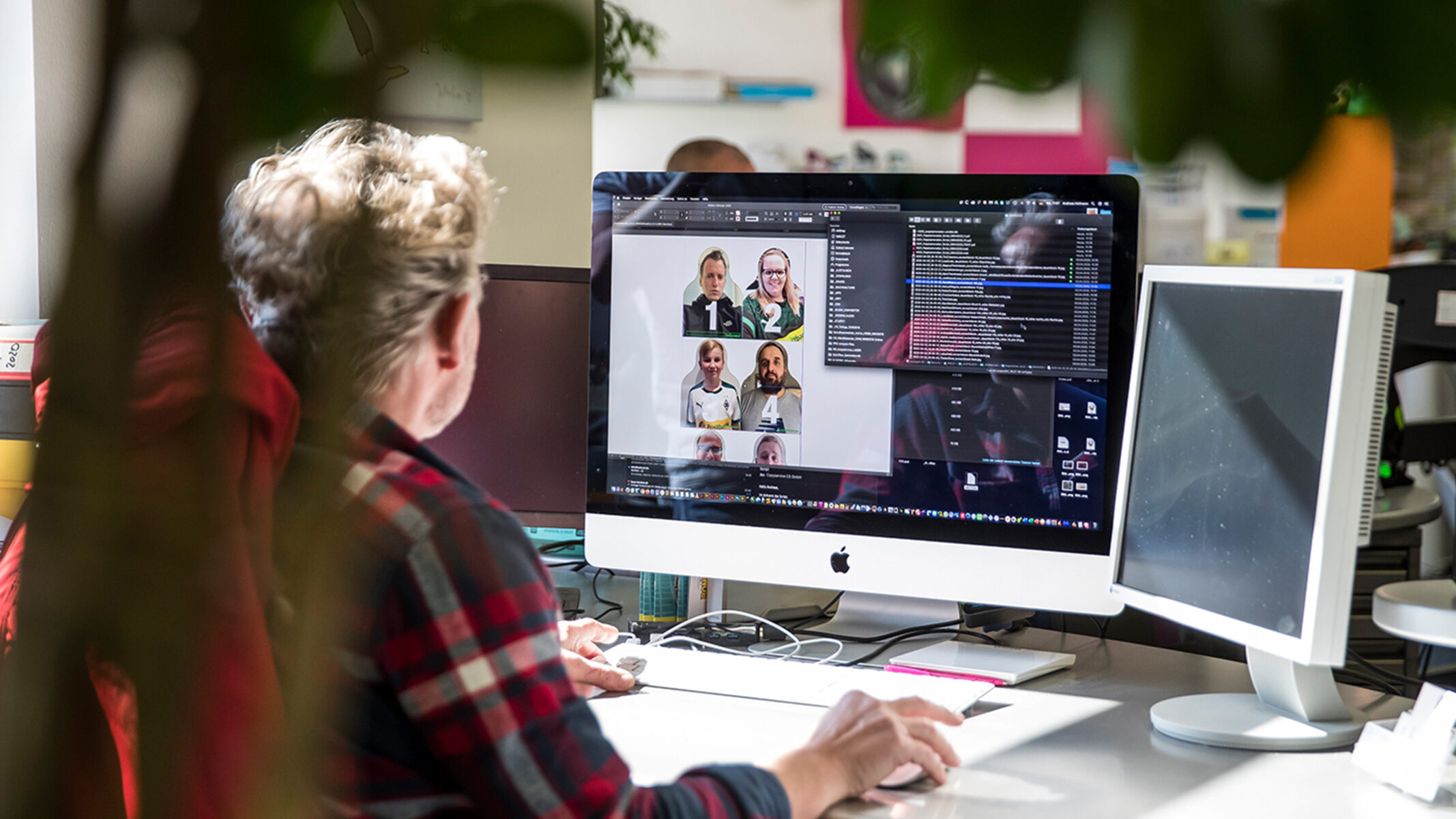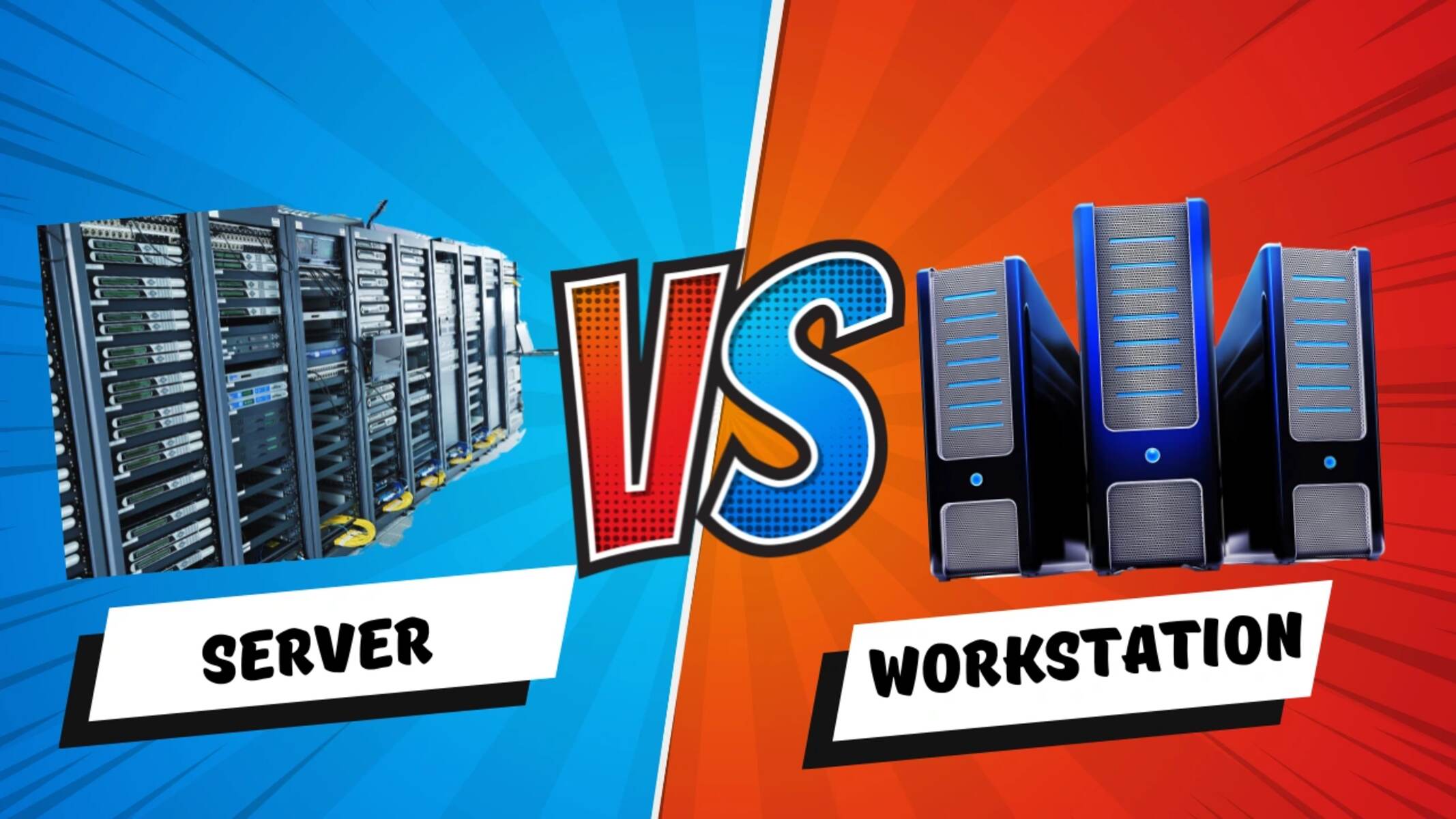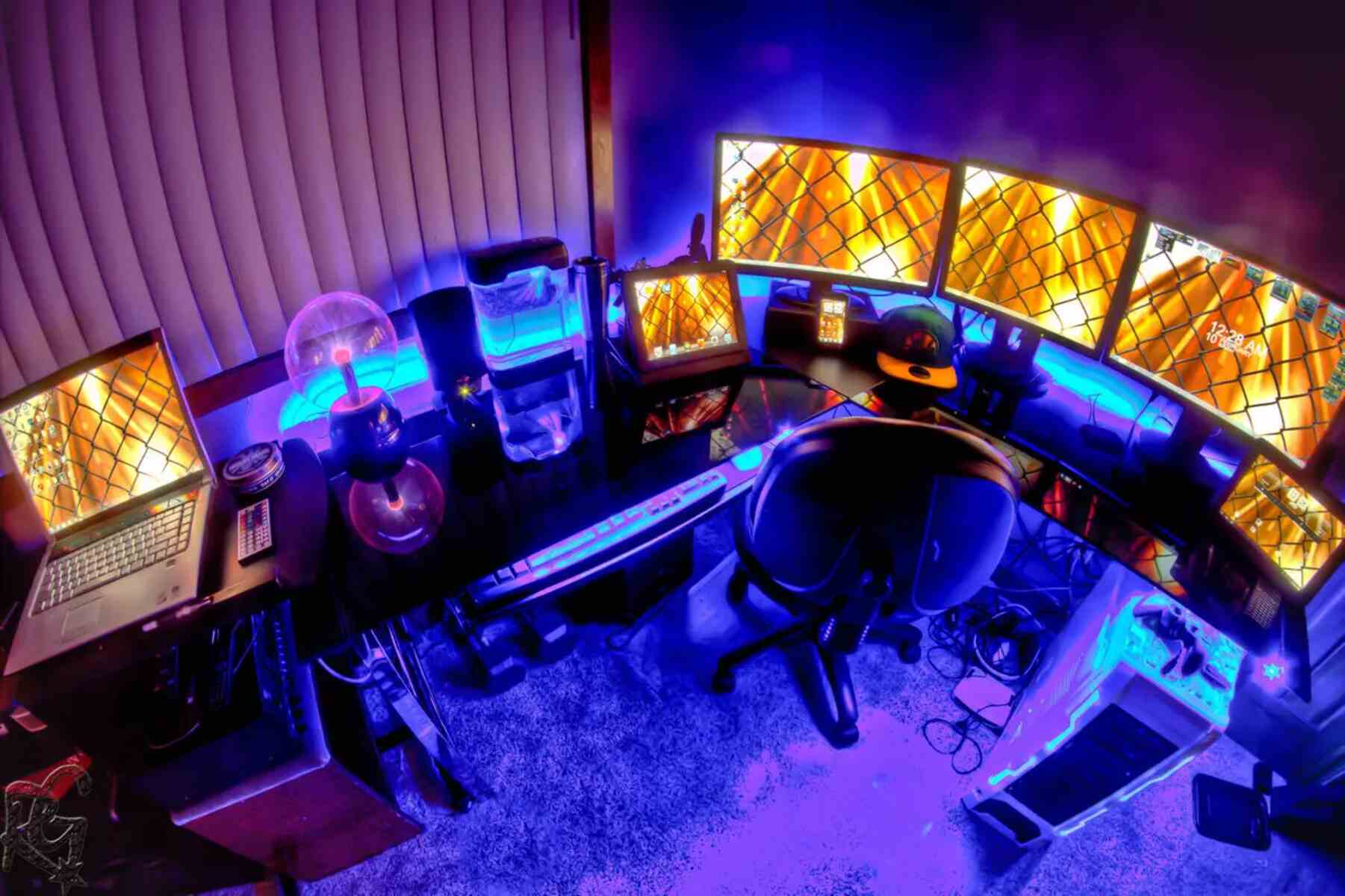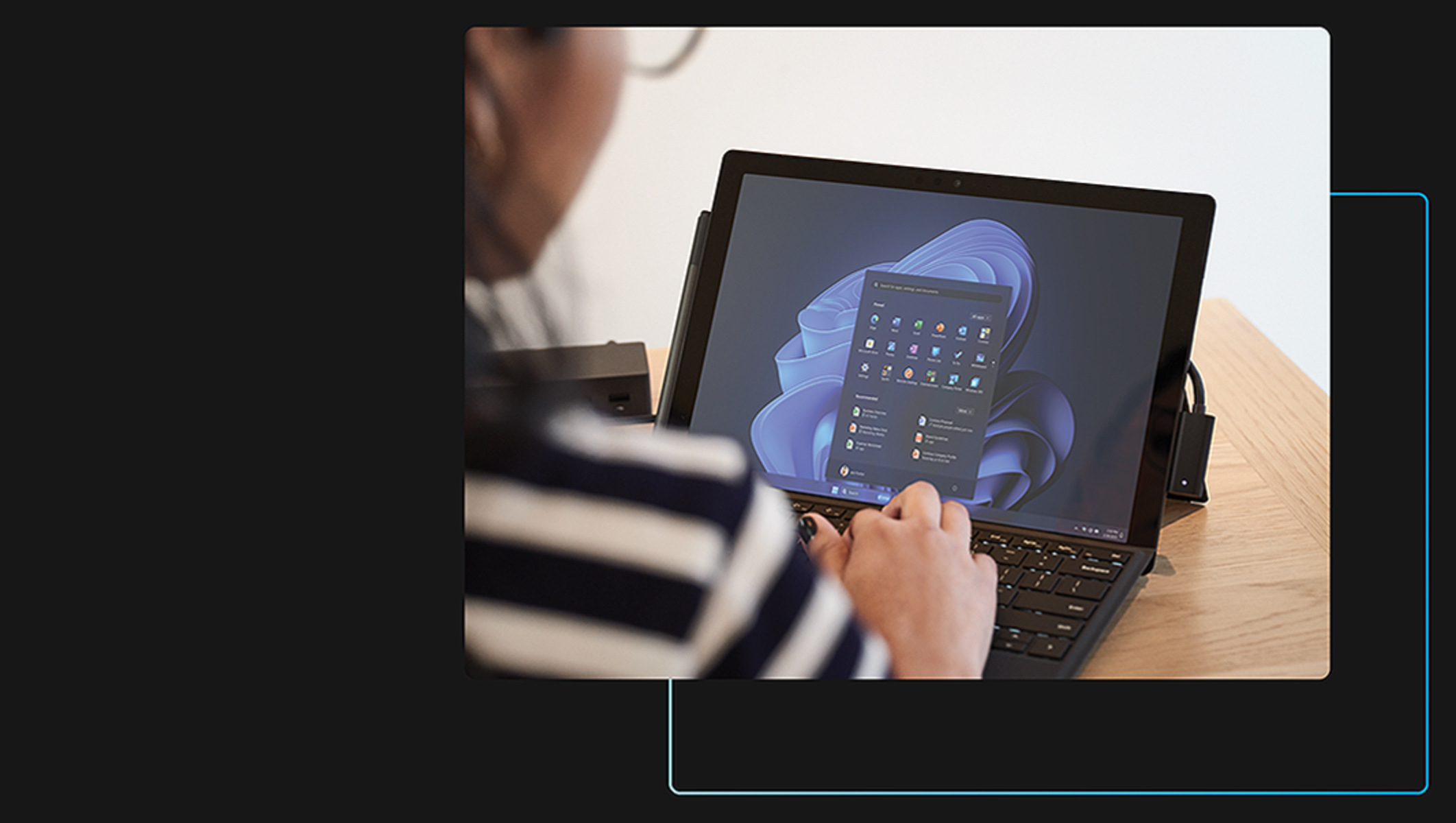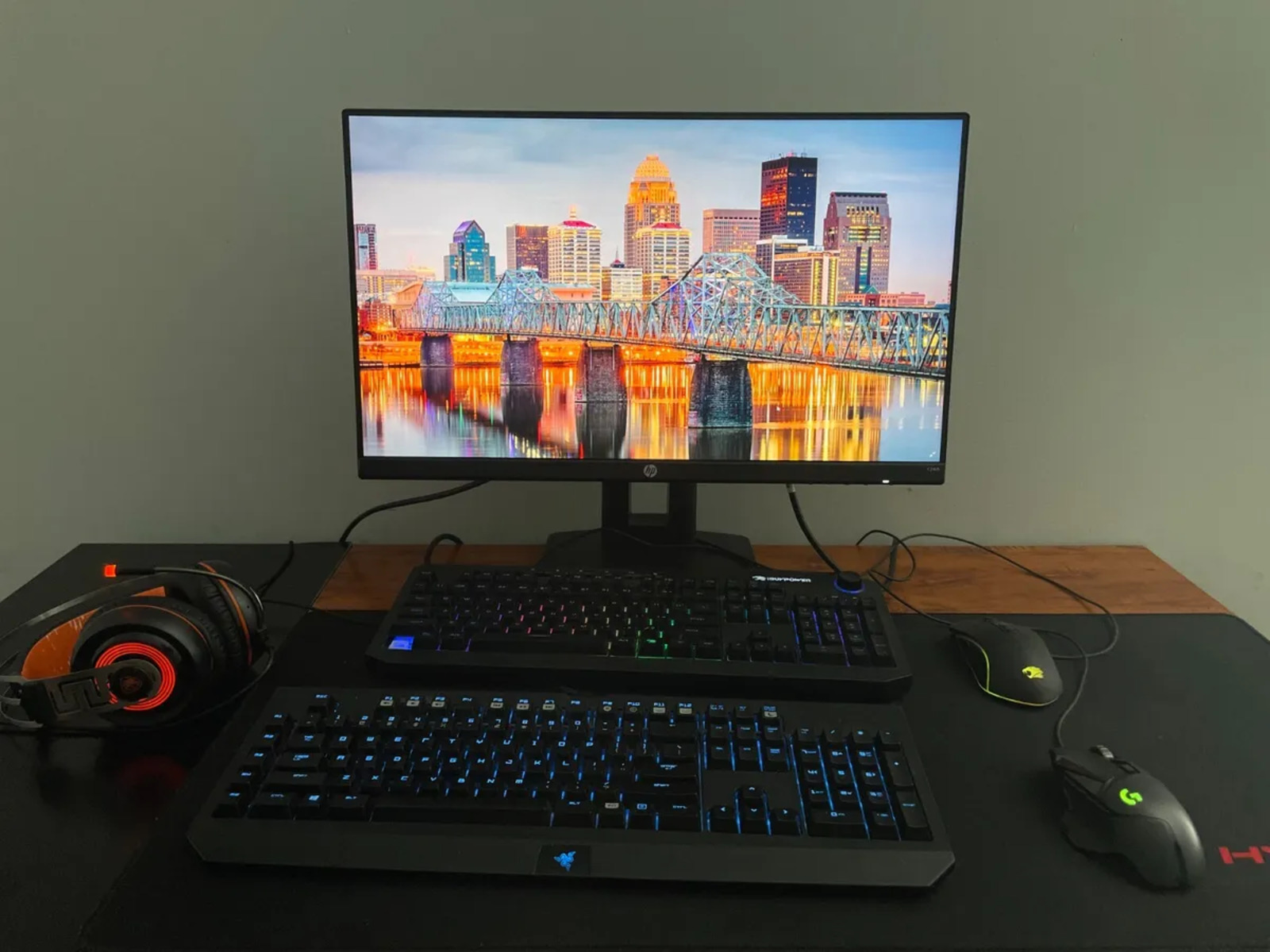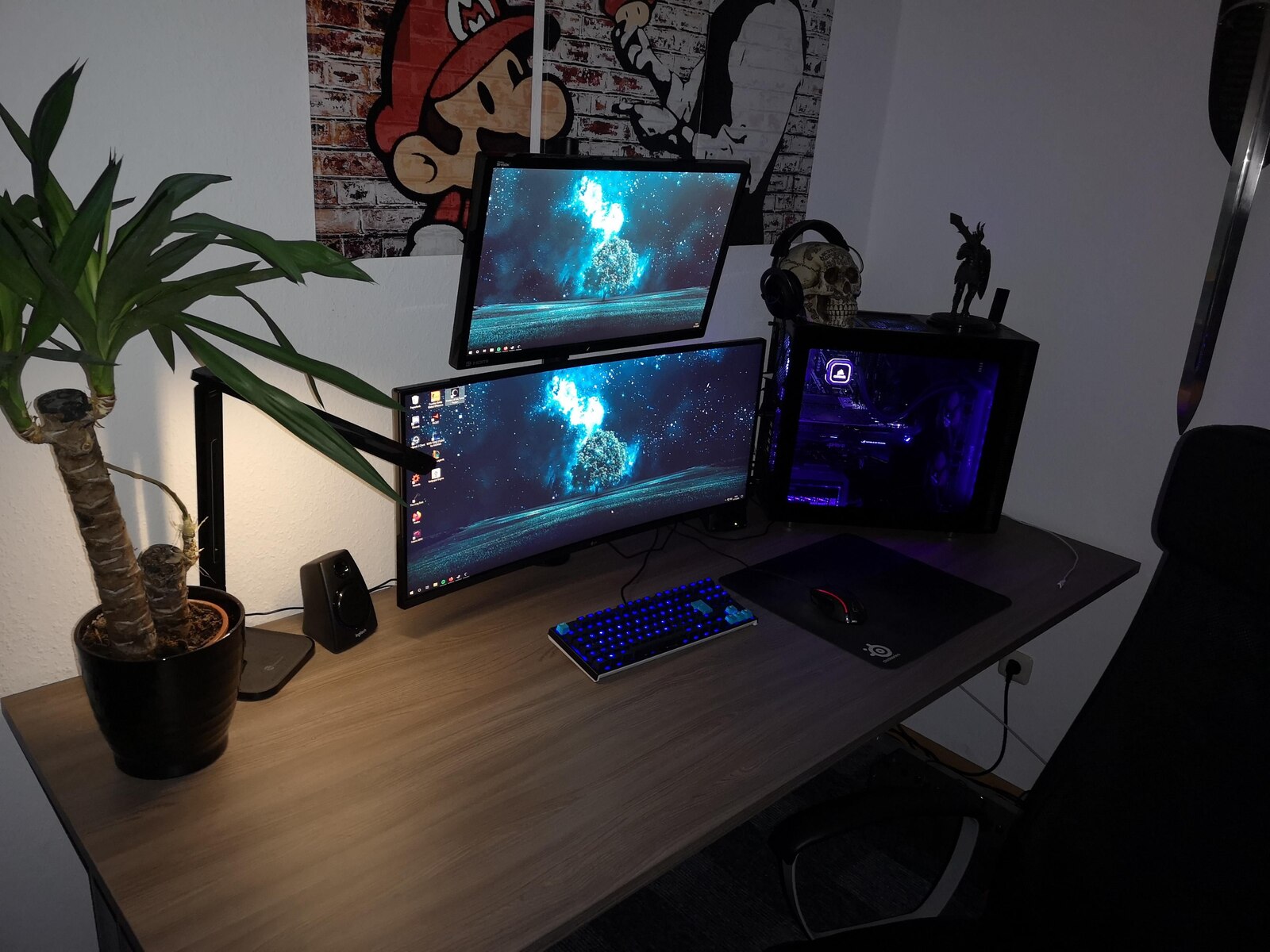Introduction
A media design workstation is a powerful computer system specifically designed to handle the demanding requirements of graphic design, video editing, 3D modeling, and other multimedia-intensive tasks. Whether you are a professional graphic designer, a video editor, or a digital artist, having a high-performance media design workstation is essential to ensure a smooth and efficient workflow.
With the constant advancements in technology and software applications, it is crucial to invest in a workstation that meets or exceeds the recommended system requirements. This will not only enhance your productivity but also allow you to take full advantage of the latest software features and capabilities.
When choosing a media design workstation, there are several key factors you need to consider. The processor, RAM, graphics card, storage, display, input devices, software, and cooling are among the most important components that determine the overall performance and functionality of the workstation.
In this article, we will delve into these requirements, providing a comprehensive guide to help you select the right components for your media design workstation. Whether you are building a custom workstation or purchasing a pre-built system, this information will serve as a valuable resource to ensure that your workstation can handle the demanding tasks of media design.
Processor
The processor, also known as the central processing unit (CPU), is the brain of your media design workstation. It is responsible for executing all the calculations and calculations required for your design and editing tasks. When it comes to processor selection, there are a few key factors to consider.
First, you need to consider the number of cores and threads. The more cores and threads a processor has, the better it can handle multitasking and intensive applications. For media design, a processor with at least 6 cores and 12 threads is recommended. This will allow you to run multiple design software simultaneously without experiencing any lag or slowdown.
Another important consideration is the clock speed, which determines how quickly the processor can execute instructions. Higher clock speeds result in faster performance. Look for a processor with a base clock speed of at least 3.5 GHz or higher for optimal performance in media design tasks.
Furthermore, the cache size should also be taken into account. The cache is a small amount of fast memory located on the processor itself, which stores frequently accessed data for fast retrieval. A larger cache can improve the processor’s efficiency, especially when working with large files and complex designs.
Lastly, it’s worth considering the generation of the processor. Newer generations offer improved performance and efficiency due to advancements in technology. Opting for the latest generation processor ensures that your workstation is future-proofed and can handle upcoming software updates and demanding applications.
Popular choices for media design workstations include processors from Intel’s Core i7 or Core i9 series or AMD’s Ryzen series. These processors offer excellent performance for multimedia tasks, providing the necessary power and speed to handle complex designs, video editing, 3D rendering, and more.
RAM (Random Access Memory)
RAM, or Random Access Memory, plays a crucial role in determining the performance and responsiveness of your media design workstation. It acts as a temporary storage for data that your computer needs to access quickly. When it comes to RAM, there are a few key considerations to keep in mind.
The first factor to consider is the amount of RAM you need. Media design software, such as graphic design programs and video editing applications, can be quite memory-intensive. Therefore, it is recommended to have a minimum of 16GB of RAM for smooth performance. However, if you frequently work with large files or complex designs, consider upgrading to 32GB or even 64GB to ensure optimal performance and smooth multitasking.
In addition to the amount of RAM, the RAM speed should also be taken into account. RAM speed, or frequency, is measured in megahertz (MHz). Higher RAM speeds result in faster data transfer rates, allowing for quicker access to the data stored in memory. Look for RAM with speeds of at least 3200MHz or higher for optimal performance in media design tasks.
Another important consideration is the type of RAM. DDR4 RAM is currently the most common and widely supported type of RAM for media design workstations. It offers faster speeds and better power efficiency compared to its predecessor, DDR3. Additionally, ensure that the RAM you choose is compatible with your motherboard to avoid any compatibility issues.
Furthermore, consider the RAM configuration. Dual-channel or quad-channel configurations provide improved performance compared to single-channel configurations. This means that having multiple RAM modules installed in pairs or sets of four can provide a significant boost to your workstation’s memory performance.
Lastly, it’s important to leave headroom for future upgrades. As technology advances and software requirements increase, it’s beneficial to have the flexibility to add more RAM in the future. Therefore, choose a motherboard that offers several RAM slots and supports higher RAM capacities.
By selecting the right amount of RAM, along with the appropriate speed and configuration, you can ensure that your media design workstation can handle the memory demands of complex designs, video editing, and other multimedia tasks with ease.
Graphics Card
The graphics card, or GPU (Graphics Processing Unit), is a critical component for any media design workstation. It is responsible for rendering and displaying images, videos, and 3D graphics on your monitor. When selecting a graphics card for your workstation, there are several factors to consider.
Firstly, consider the amount of VRAM (Video Random Access Memory) that the graphics card offers. VRAM is dedicated memory on the graphics card that stores the image and video data being rendered. For media design tasks, it is recommended to have a minimum of 4GB VRAM. However, if you work with high-resolution images, complex 3D models, or engage in video editing, consider opting for a graphics card with 8GB or even 16GB of VRAM for smooth performance.
Additionally, pay attention to the GPU architecture and performance of the graphics card. Look for modern architecture such as NVIDIA’s GeForce RTX series or AMD’s Radeon RX series, as these offer improved performance and efficiency compared to older generations. Be sure to check for compatibility with your software applications, as some design software may have specific requirements or optimizations for certain graphics card models.
The number and type of display outputs are also important considerations. If you work with multiple monitors or require support for higher resolutions, ensure that the graphics card has the necessary display outputs, such as HDMI, DisplayPort, or DVI, to accommodate your setup.
In addition to display outputs, consider the maximum resolution and refresh rate supported by the graphics card. Higher resolutions, such as 4K or even 8K, can provide a more detailed and immersive design experience. Similarly, a higher refresh rate, such as 144Hz or 240Hz, can result in smoother motion in videos and animations.
Lastly, consider the cooling solution of the graphics card. Media design tasks can put a significant load on the GPU, resulting in increased heat generation. Look for graphics cards with efficient cooling solutions, such as multiple fans or liquid cooling, to ensure optimal thermal performance and prevent overheating.
By selecting a powerful and capable graphics card that meets your specific needs, you can ensure smooth and efficient rendering of graphics, videos, and 3D models, enhancing your media design workflow.
Storage
Storage is an essential component of a media design workstation, as it determines how quickly and efficiently your files are accessed and saved. When it comes to storage options, there are a few factors to consider for optimal performance.
Firstly, consider using a solid-state drive (SSD) for your primary storage. SSDs offer significantly faster read and write speeds compared to traditional hard disk drives (HDDs). This means that your design files, software applications, and operating system can load and save much more quickly, resulting in a smoother workflow. Opt for an SSD with a capacity of at least 500GB, or even 1TB, to accommodate your design files and software installations.
In addition to an SSD, consider adding a secondary storage option, such as a larger HDD or a network-attached storage (NAS) device. HDDs provide more storage capacity at a lower cost per gigabyte, making them ideal for storing large files, such as raw footage or archives. A NAS device, on the other hand, offers centralized storage that can be accessed by multiple workstations, allowing for easy collaboration and file sharing.
If your budget allows, consider utilizing a RAID (Redundant Array of Independent Disks) configuration for your storage solution. RAID arrays can provide increased data redundancy, performance, or a combination of both. RAID 0 offers improved performance by striping data across multiple drives, while RAID 1 duplicates data for increased redundancy.
Another consideration is the connection interface. Ensure that your storage drives support the latest interfaces, such as SATA III or NVMe, for optimal performance. Additionally, if you work with large files or have high data transfer requirements, consider utilizing external storage options with Thunderbolt or USB 3.1 Gen 2 connectivity.
Lastly, don’t forget to regularly backup your important design files and projects. Consider implementing a backup strategy that includes cloud storage, external hard drives, or network-attached storage. This ensures that your data is protected from hardware failures or accidental deletion.
By investing in fast and reliable storage solutions, you can speed up your file access and saving times, resulting in a more efficient media design workflow.
Display
The display is a crucial component of a media design workstation, as it directly affects your visual experience and the accuracy of your design work. When selecting a display, there are several factors to consider for optimal performance and productivity.
The first consideration is the display size. Larger displays offer more screen real estate, allowing you to have multiple design tools and windows open simultaneously. A display size of 27 inches or larger is recommended for media design work, as it provides ample space for your design projects without compromising on clarity.
The resolution of the display is another important factor. Higher resolutions, such as 4K or even 8K, offer sharper and more detailed visuals, enabling you to see the fine details of your designs. However, keep in mind that higher resolutions require more GPU power and can impact performance, so ensure that your graphics card can handle the resolution you choose.
Color accuracy is crucial for media design work, as it directly affects how your designs will appear in print or on other devices. Look for displays that offer a wide color gamut, such as Adobe RGB or DCI-P3, for accurate color reproduction. Additionally, consider displays with hardware calibration capabilities or those that come pre-calibrated from the factory to ensure precise color accuracy.
Another consideration is the refresh rate of the display. Higher refresh rates, such as 144Hz or 240Hz, result in smoother motion, which can be beneficial when working with animations or video editing. However, keep in mind that higher refresh rates require more GPU power.
Ergonomics should not be overlooked when selecting a display. Look for displays that offer adjustable stands, allowing you to tilt, swivel, and adjust the height of the screen to achieve a comfortable viewing position. This helps reduce strain on your neck and eyes during long working hours.
Lastly, connectivity options should be taken into account. Ensure that the display has the necessary ports, such as HDMI, DisplayPort, or USB Type-C, to connect to your workstation. Additionally, if you work with multiple displays, check if the graphics card supports multi-monitor setups.
By choosing a display that offers a large size, high resolution, accurate color reproduction, and ergonomic features, you can enhance your media design experience and ensure that your designs are presented accurately and beautifully.
Input Devices
Input devices play a crucial role in the usability and efficiency of a media design workstation. Selecting the right input devices can greatly enhance your workflow and productivity. Here are the key input devices to consider for your workstation.
The primary input device for designers is the keyboard. Look for a keyboard that offers a comfortable typing experience with good key travel and tactile feedback. Additionally, consider keyboards with customizable backlighting and programmable keys or macros, which can help streamline your workflow and improve efficiency. Some keyboards are also specifically designed for creative professionals, offering features like customizable color profiles and shortcut keys for design applications.
The mouse or trackball is another important input device for precise cursor control. An ergonomic mouse with customizable buttons and sensitivity settings can make a significant difference in your design work. Additionally, there are specialized graphic tablets available that allow you to draw directly on the tablet’s surface, providing a more natural and intuitive experience for digital artists and illustrators.
A graphics tablet can greatly enhance your ability to create precise and detailed designs, making it a valuable input device for graphic designers, illustrators, and digital artists.
For those involved in 3D modeling or sculpting, consider investing in a 3D mouse. A 3D mouse allows you to navigate 3D environments with greater ease and precision, providing a more intuitive way to work with complex 3D models.
Touchscreen displays can also serve as input devices, especially for digital artists or designers working with touch-enabled design software. These displays allow for direct manipulation of elements on the screen, providing a more hands-on and immersive design experience.
When selecting input devices, consider factors such as comfort, customization options, and compatibility with your preferred design software. Additionally, it’s important to consider ergonomics and choose input devices that promote proper hand and wrist positioning to prevent discomfort or repetitive strain injuries.
Ultimately, finding the right combination of input devices that suit your preferences and workflow can greatly enhance your productivity and creativity as a media design professional.
Software
The software you choose for your media design workstation is crucial, as it determines the tools and features available for your design projects. Selecting the right software can significantly impact your workflow, productivity, and the quality of your designs. Here are some key considerations when it comes to software for media design.
Graphic design software is a primary requirement for any media design workstation. Popular options include Adobe Photoshop, Illustrator, and InDesign, which offer a wide range of tools for image editing, vector graphics creation, and page layout design. These software applications are widely used in the industry and provide comprehensive features and capabilities to meet the needs of graphic designers.
For video editing, software applications like Adobe Premiere Pro, Final Cut Pro, and DaVinci Resolve are popular choices. These tools offer advanced video editing features, including timeline editing, effects, color grading, and audio editing, allowing you to create professional-quality videos and visual effects.
3D modeling and animation software is essential for those working in fields like product design, architecture, or game development. Software options like Autodesk Maya, 3ds Max, or Blender provide powerful tools for creating and animating 3D models, allowing you to bring your designs to life.
Additionally, consider software that supports collaboration and file sharing, especially if you work in a team or collaborate with clients. Cloud-based solutions like Adobe Creative Cloud or Google Drive enable easy sharing and collaboration on design projects, regardless of location.
When selecting software, ensure that it is compatible with your hardware and operating system. Some software applications have specific system requirements, and using outdated or incompatible software can result in performance issues or limitations in functionality.
Lastly, keep in mind that software updates and advances, so invest in software that offers regular updates and support. This ensures that you have access to the latest features, bug fixes, and compatibility with emerging technologies.
By choosing the right software applications for your media design workstation, you can unlock powerful tools and features that enhance your creative abilities and streamline your workflow.
Cooling
Proper cooling is essential for a media design workstation to ensure optimal performance and prevent overheating, especially during resource-intensive tasks. When it comes to cooling, there are a few factors to consider to maintain the stability and longevity of your workstation.
The first consideration is the case airflow. Choose a computer case that has good ventilation with multiple fan mounting points. This allows for efficient intake of cool air and expulsion of hot air. Additionally, consider case fans with high airflow and static pressure to ensure proper air circulation inside the case.
The CPU cooler is another vital component for cooling. It is responsible for dissipating heat generated by the processor. There are two main types of CPU coolers: air coolers and liquid coolers.
Air coolers consist of heatsinks and fans that draw heat away from the CPU. They are generally more affordable and reliable, providing adequate cooling for most media design workstations. Look for an air cooler with a large heatsink and a high-quality fan for effective heat dissipation.
Liquid coolers, also known as all-in-one (AIO) coolers, use a closed-loop system to transfer heat from the CPU to a radiator. This offers more efficient cooling compared to air coolers and can handle higher temperatures, making them suitable for overclocking or extreme CPU performance. However, they can be more expensive and require additional installation and maintenance.
Aside from CPU cooling, it’s essential to manage the temperature of the graphics card (GPU) as well. Most high-performance graphics cards come with their own coolers, consisting of fans and heatsinks. However, if you work with demanding 3D models or engage in intense gaming, consider additional cooling solutions such as aftermarket GPU coolers or graphics card water blocks for effective heat dissipation.
Ensure that your workstation has adequate airflow by strategically placing case fans for both intake and exhaust. Intake fans should be positioned at the front or sides of the case, while exhaust fans should be placed at the rear or top. This creates a positive airflow, pulling cool air in and expelling hot air out of the case.
Regular cleaning and maintenance of your cooling system are also important. Dust accumulation can restrict airflow and hinder the cooling efficiency of your workstation. Clean the intake and exhaust fans regularly, and consider using filters to prevent dust buildup.
By investing in proper cooling solutions, maintaining good airflow, and regularly cleaning your system, you can keep your media design workstation running at optimal temperatures, ensuring stable performance and longevity of your components.
Conclusion
Building or selecting a media design workstation with the right components is crucial for achieving optimal performance and productivity in your creative work. From the processor to the storage, each component plays a significant role in determining the overall capabilities of your workstation.
A powerful processor with multiple cores and high clock speeds ensures smooth multitasking and swift execution of complex design tasks. Sufficient RAM allows for seamless operation of resource-intensive applications, while a capable graphics card ensures accurate rendering and fast graphics processing.
Storage options, such as SSDs and HDDs, dictate how quickly your files are accessed and saved, and a high-quality display with accurate color reproduction enhances your visual experience and improves the precision of your designs.
Choosing the right input devices and software is equally important. Comfortable keyboards, ergonomic mice, and specialized graphic tablets can greatly improve your productivity, while software applications tailored to your needs provide the tools and features necessary for creating stunning designs.
Lastly, don’t neglect cooling solutions to keep your workstation running smoothly and prevent overheating. Proper airflow, CPU coolers, and GPU cooling ensure the longevity and stability of your components, allowing you to work seamlessly for extended periods.
By carefully considering the requirements outlined in this guide and selecting components that meet your specific needs, you can build a media design workstation that empowers your creative endeavors and enables you to bring your ideas to life with speed, precision, and efficiency.







